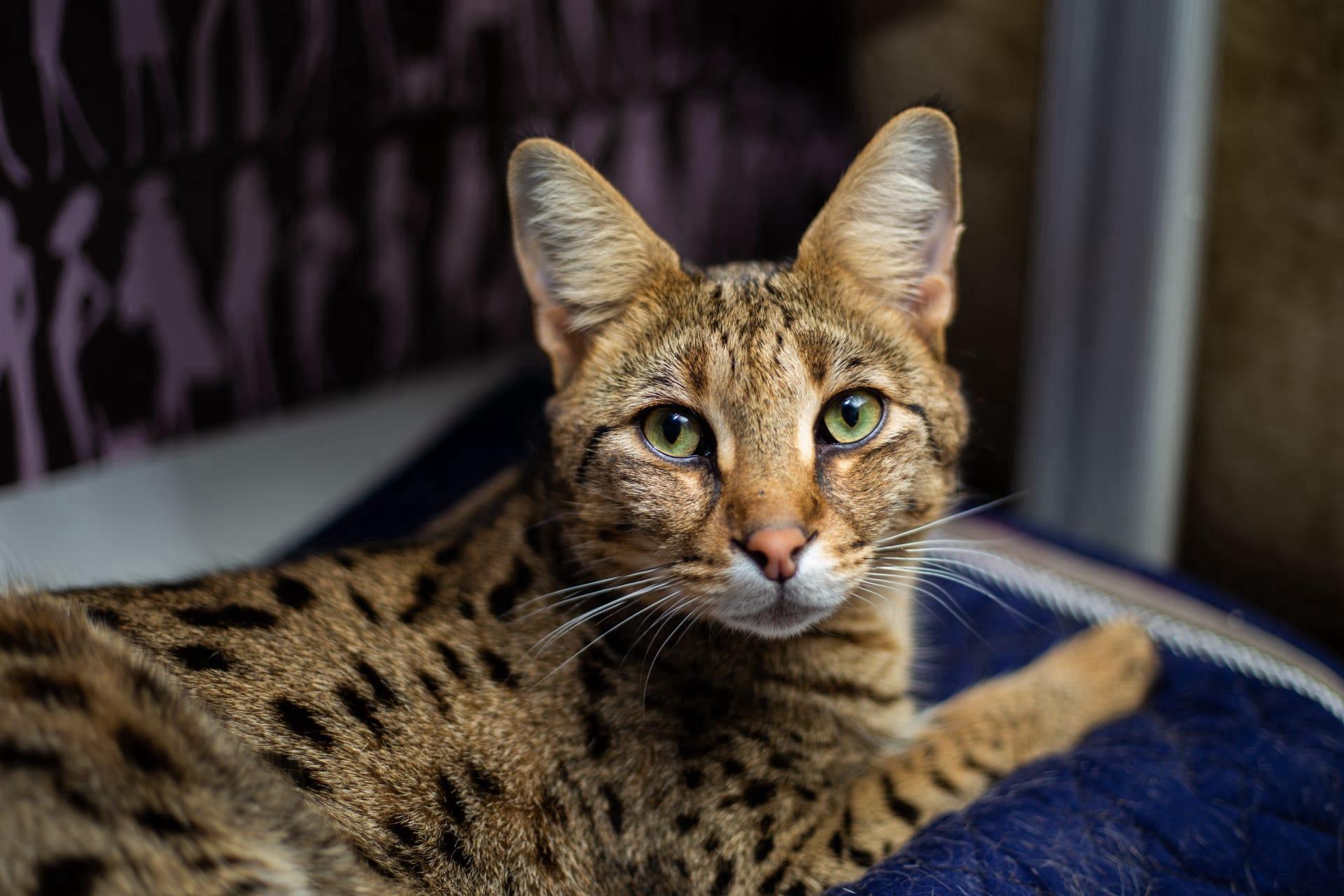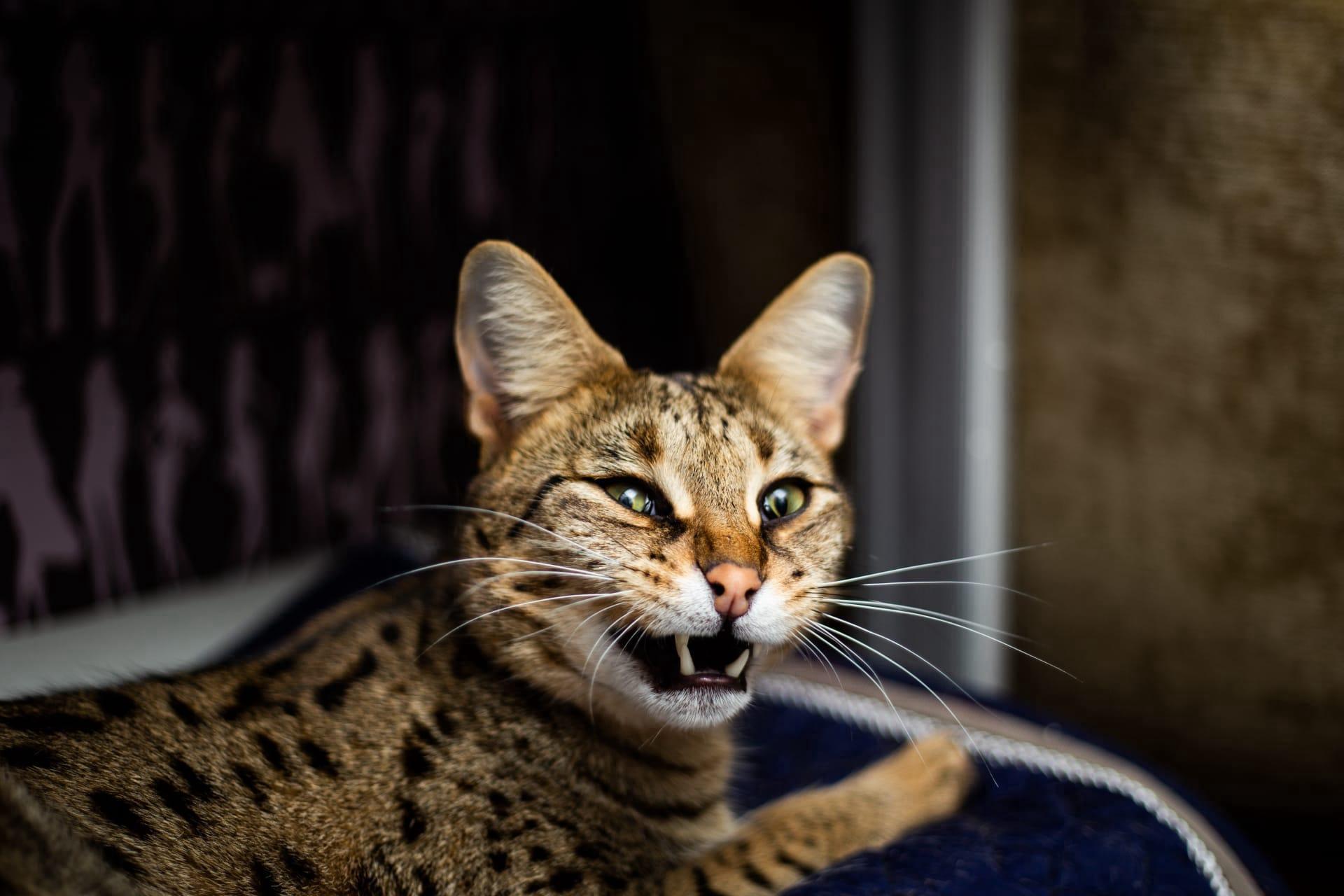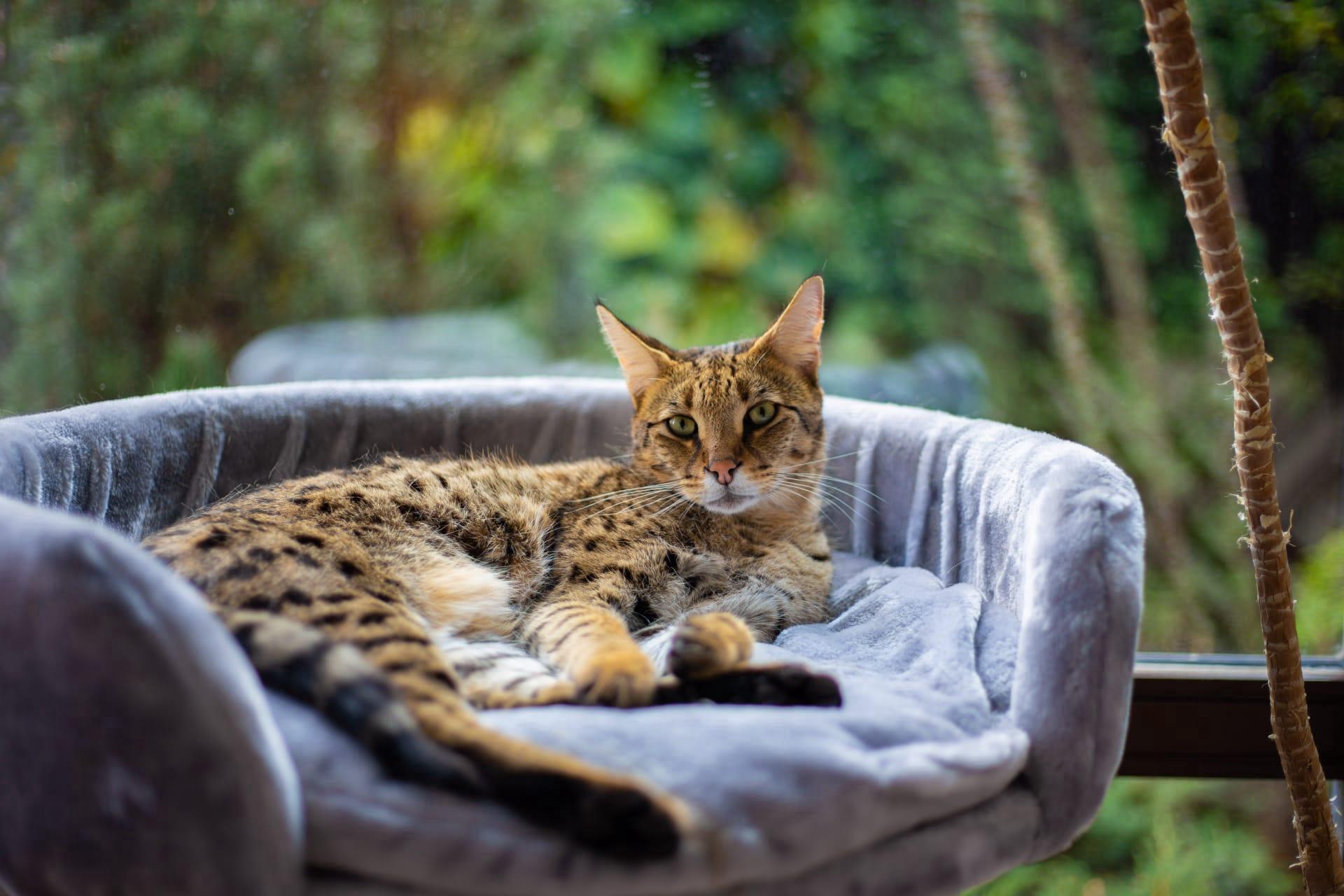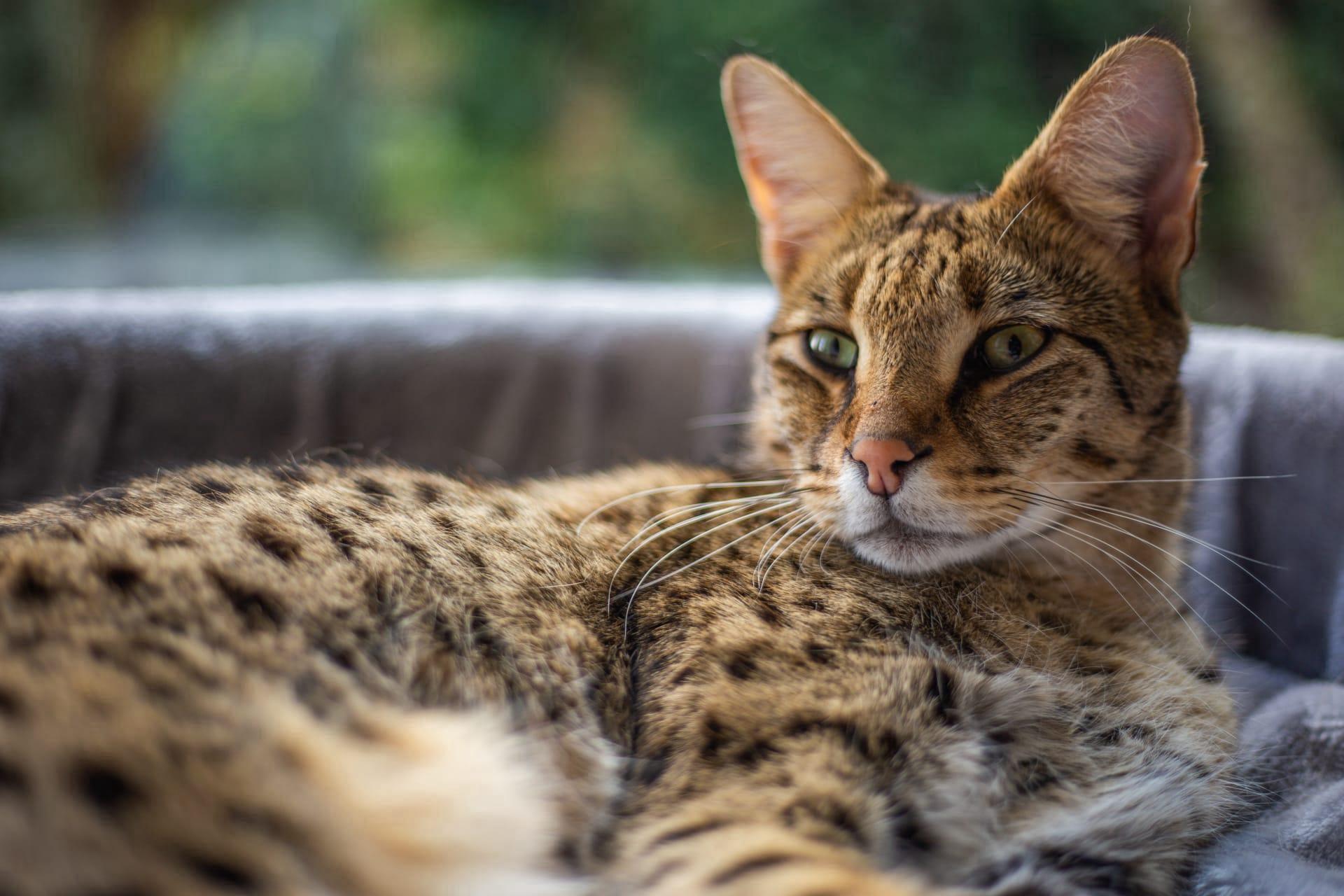Savannah Cat
- Home /
- Mini Encyclopedia /
- Animal /
- Savannah Cat
1
The Savannah cat is a hybrid breed that combines the wild African serval with a domestic cat. This crossbreeding results in a striking feline that showcases the physical size, tall ears, and patterned coat of the serval, alongside the temperament of a household pet. Classified based on the generation removed from the wild serval, Savannah cats are designated from F1 (first generation) to F5 or beyond, with F1 individuals being 50% serval, and the subsequent generations having progressively less serval DNA.
Savannah cats are found worldwide, thanks to their popularity among exotic pet enthusiasts. Initially bred in the United States in the 1980s, these cats have since found homes across various continents, including Europe, Asia, and Australia. The adaptability of the Savannah allows it to live in many environments, although it thrives in households that can cater to its energetic and playful nature. Due to legal restrictions, the ownership of Savannah cats is regulated in some regions, with certain generations of the breed being prohibited or requiring special permits.

2
Question: Do Savannah cats pose a danger to native wildlife and humans due to their wild ancestry?
Answer: The concern that Savannah cats pose a significant threat to native wildlife and humans is a common misconception. While it's true that the breed inherits hunting instincts from the serval, responsible ownership and proper upbringing can mitigate these behaviors. Savannah cats, especially those of higher generations (F3 and beyond), exhibit domestic traits more prominently and adapt well to indoor living. With sufficient stimulation and interaction, they can live harmoniously within human environments without posing a greater risk to wildlife than any other domestic cat.

3
Savannah cats develop strong bonds with their human families, often showing loyalty and affection akin to more traditional household pets. Their intelligence and curious nature make them engaging companions, capable of learning tricks and commands. Many owners report that Savannahs follow them around the house, participate in activities, and seek attention, demonstrating their social inclination.
The breed's interaction with humans is not without challenges, given their high energy levels and need for stimulation. Savannahs require dedicated playtime, environmental enrichment, and social interaction to thrive. Their compatibility with humans is significantly enhanced when their lifestyle needs are met, making them suitable for active individuals or families who appreciate the interactive and lively nature of their pets.

4
The origin of the Savannah cat dates back to 1986, when the first known Savannah was bred by crossing a male serval with a domestic Siamese cat. This pioneering crossbreed was achieved by Judee Frank, a breeder in the United States, sparking interest and enthusiasm for this unique hybrid. The breed was named "Savannah" after the habitat of the serval, reflecting its exotic and wild lineage.
Over the years, the Savannah cat has undergone significant evolution and breeding refinement. Breeders have worked to enhance the desirable traits of the serval—such as its large ears, long legs, and spotted coat—while maintaining the temperament suitable for family life. This has led to the establishment of standards for the breed, with a focus on health, temperament, and appearance. The Savannah cat's evolution is marked by its increasing acceptance within feline registries and the pet community, showcasing its journey from an exotic novelty to a recognized and cherished companion animal.

5
Film: "The Savannah Cat: Crossing the Wild with the Tame" is a documentary produced in the United States in 2015. It explores the origins, breeding, and care of Savannah cats, highlighting their unique characteristics and the challenges of hybrid cat ownership. The film provides insights into the ethical considerations of breeding servals with domestic cats and the impact of such practices on the animals and owners involved.
Book: "Savannah Cats: The Owners Guide to the Care and Training of Savannah Cats" by Sarah Hartwell, published in the United Kingdom in 2010, offers comprehensive information on the breed. Hartwell delves into the specifics of Savannah cat care, behavior, and training, drawing on scientific research and breeder insights to present a thorough overview of what it takes to live with these remarkable pets.
Book: "Living with Savannah Cats: A Guide to Raising and Understanding a Savannah Cat" by James Williams, released in the United States in 2013, focuses on the practical aspects of raising a Savannah cat. Williams shares his personal experiences and advice on nutrition, health, socialization, and behavioral management, providing a valuable resource for current and prospective Savannah cat owners.